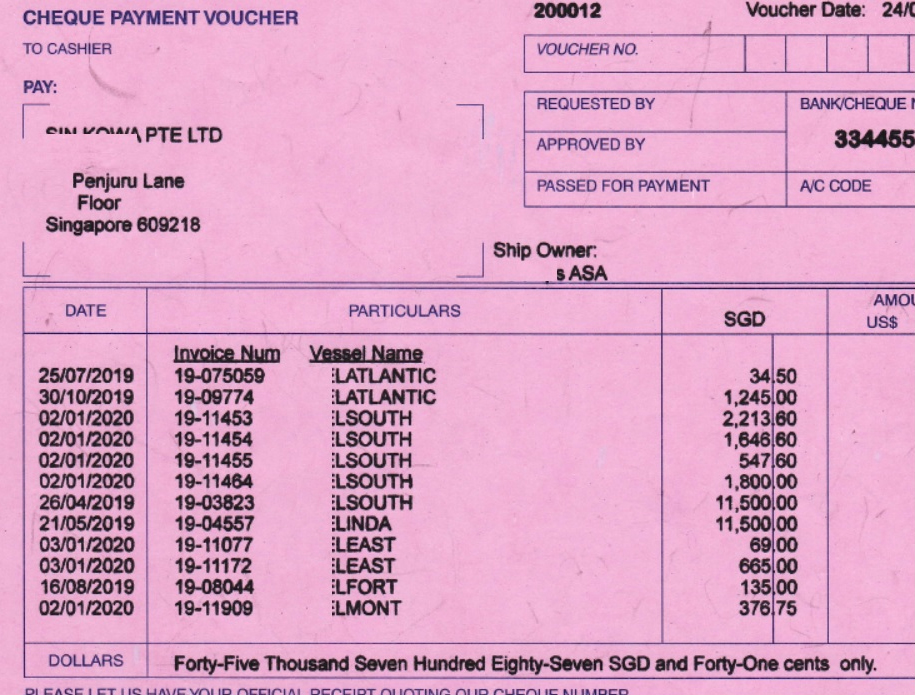Case Study: Containing Shrinkage Loss

The client is an offshore service provider for safe embarking, disembarking and manoeuvring of huge vessels between the sea waters and ports of Singapore. The company used software spreadsheet to record and store daily transactional data.
The challenges: Spreadsheet data was copied from one computer to another and the content could be discretionarily amended during the transits. Vital management reports were not timely and reliably generated. Bunker shrinkage loss was prevalent and not effectively contained. Job assignments and crew movement reporting were manually managed and loading down on Control room.
The solution: We discussed and analysed with the client the business process and concluded that a standard off-the-shelf solution was not feasible.
A customised business application with centralised database was built to mirror the business processes. Data entries were validated and mostly done by mouse clicks. We implemented data policies to preserve data integrity. Management reports were generated on-demand from the same set of data. A mobile app was developed to automate the job assignment and crew movement reporting processes.
Outcome: The new business application put everyone on the same page, sharing the same data sets which led to better collaboration amongst the teams. The business processes were mirrored and embedded into the system; job knowledge was retained which led to shorter staff training time. Data integrity policies ensured that the real-time, on-demand management reports generated provided reliable bunker insights which in turn helped to bring down shrinkage loss significantly. The mobile app allowed the crew to receive job assignments automatically and submit movement reports without contacting Control room. Control staff are now more focused on providing better customer service.
Case Study: Stored Value Ticket

The client is a ferry operator providing passenger ferry service in international waters. The company sold pre-printed paper tickets either over the counters or through resellers. There were two types of ticket: one-way or two-way ticket. It did not have a Point-of-Sales (POS) system.
The challenges: There were many issues, but the most notable challenges were the ticket management and capture of transactional data over the counters. Because tickets became valuable as soon as they were printed, extra effort was required to track their physical movement. Although each ticket had a unique serial number, there was no system to share the information amongst branches across different geographical location. This made ticket validation an unreliable guesswork. As it was part of the obligation to print boarding pass for the passenger, the counter staff spent significant amount of time on data entry activity that benefited only the port operator.
The solution: It had become clear that a ready-made solution that met operational requirement was not present in the market. A customised POS system was developed.
Computers were setup at various branches to run the POS which was linked to a centralised server located at HQ. Computer keyboards with built-in OCR readers were used to auto-capture and fill passenger data by swiping passports. A Stored Value Ticket framework was implemented such that a ticket remained valueless until it was initialised by the system. A serial number would be allocated and printed, and the ticket type (one-way or two-way) would be determined and registered with the centralised database during the initialisation. The POS captured daily transactional data and concurrently connected to the port operator's server to process the boarding pass.
Outcome: With the OCR reader, process time over the counter for each transaction reduced from one minute to twenty seconds. With the Store Value Ticket framework, the intrinsic value of the ticket would only be established after initialisation process. This allowed the company to bulk print tickets with a single standard format, minimising the administrative effort of keeping multiple stock. As the serial numbers were registered in a centralised database, counter staff could confidently verify the tickets' validity from any branch, resulting in improved customer service. The new system provided daily sales settlement function, enhancing staff productivity and accountability during the shift hand-over process.
Case Study: Complex Account Payable Task

The client is a ship management company for ship owners.
The challenges: The Account Payable (AP) team received hundreds of supplier invoices monthly. Each supplier invoice represented the goods and services supplied to a vessel. Existing system did not have a function to link supplier invoices to vessels, nor vessels to ship owners. The AP team wanted to consolidate supplier's invoices, by ship owner, for payment.
The solution: A custom-made business application was delivered. The application provided a user interface for the user to link a fleet of vessels to their respective owner, and the suppliers' invoices to vessels that received the goods and services. The user would be able to retrieve a list of suppliers' invoices that were linked to the ship owner's vessels. The application auto-grouped the selected invoices by supplier, and generated multiple payment vouchers at one go.
Outcome: This was a classic example where an unique business process cannot be handled by an off-the-shelf solution. After the application was delivered, the AP team was able to cut the process time by 50%.